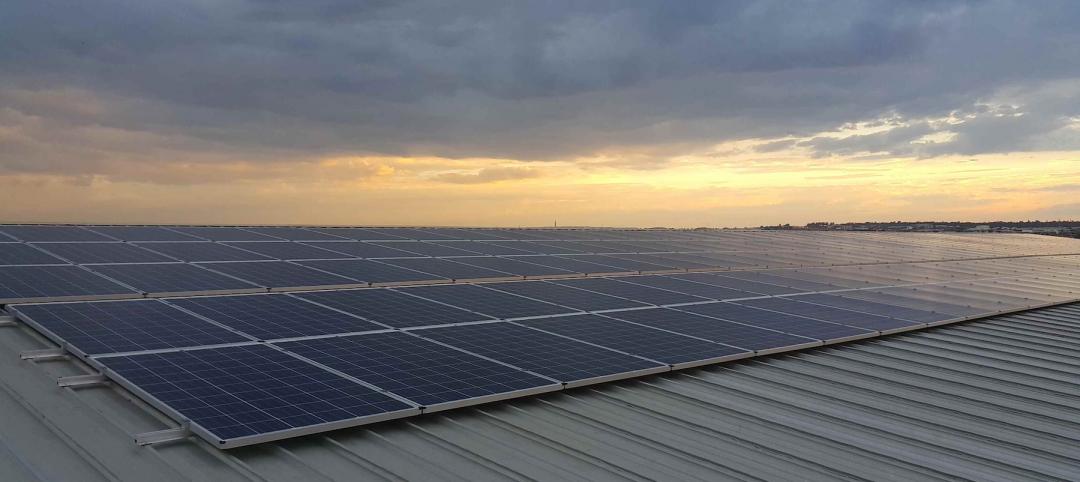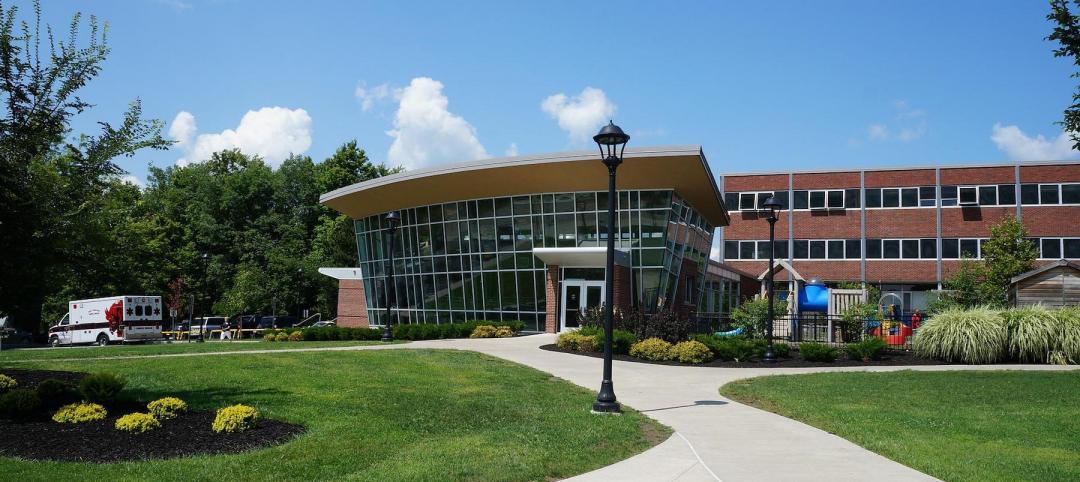Architects and engineers participating in the AIA’s 2030 Commitment are reporting the greatest reduction in predicted energy use (pEUI) in the program’s 10-year history.
“This year marks a critical inflection point for the program and climate action,” said 2020 AIA President Jane Frederick, FAIA. “This report outlines a vision for the coming years, which is anchored in community advocacy, adoption of on-site and off-site renewable energy sources, and increased attention to embodied carbon.”
The report—2030 by the Numbers: The 2019 Summary of the AIA 2030 Commitment—amalgamates predicted energy use data in buildings from 311 companies participating in the 2030 Commitment and analyzes design phase data from more than 20,300 projects. Architects, engineers, and building owners involved in the projects achieved a 49 percent overall pEUI reduction. The reduction is equivalent to avoiding 20.2 million metric tons of CO2 emissions. Other notable data included in the report:
- 241 whole building projects designed to be net-zero energy.
- 69 percent increase in firms meeting the 70 percent pEUI reduction since 2018.
- 27 large and small companies met 2030 Commitment targets.
As participants continue to improve reducing carbon emissions, AIA is upgrading its Design Data Exchange (DDx) platform to streamline the project reporting process and to improve user experience. The new platform will support optional data points—including embodied carbon and off-site renewables—that will deliver expanded insights into building performance.
AIA is also continuing its efforts to drive climate action in the built environment following its landmark initiative last year. Earlier this year, AIA released its Climate Action Plan and Architect’s Policy Platform, which outline AIA’s goals for carbon reduction and climate action policy initiatives respectively.
Complete details of the AIA 2030 Commitment program can be found on AIA’s website.
Related Stories
Codes and Standards | May 19, 2022
JLL launches non-profit aiming to mitigate climate change
Real estate and investment management firm JLL recently launched JLL Foundation, a non-profit dedicated to making a long-term impact on environmental sustainability.
Sponsored | BD+C University Course | May 3, 2022
For glass openings, how big is too big?
Advances in glazing materials and glass building systems offer a seemingly unlimited horizon for not only glass performance, but also for the size and extent of these light, transparent forms. Both for enclosures and for indoor environments, novel products and assemblies allow for more glass and less opaque structure—often in places that previously limited their use.
Building Team | Apr 20, 2022
White House works with state, local governments to bolster building performance standards
The former head of the U.S. Green Building Council says the Biden Administration’s formation of the National Building Performance Standards Coalition is a “tremendous” step in the right direction to raise building performance standards in the U.S.
Energy-Efficient Design | Apr 19, 2022
A prefab second skin can make old apartments net zero
A German startup is offering a new way for old buildings to potentially reach net-zero status: adding a prefabricated second skin.
Legislation | Apr 11, 2022
Dept. of Energy releases RFI for K-12 schools energy upgrade program
The U.S. Dept. of Energy (DOE) released a Request for Information (RFI) to help decide how best to spend $500 million from the recently passed federal infrastructure law for K-12 public school energy upgrades.
Multifamily Housing | Apr 7, 2022
Ken Soble Tower becomes world’s largest residential Passive House retrofit
The project team for the 18-story high-rise for seniors slashed the building’s greenhouse gas emissions by 94 percent and its heating energy demand by 91 percent.
Legislation | Mar 28, 2022
LEED Platinum office tower faces millions in fines due to New York’s Local Law 97
One Bryant Park, also known as the Bank of America Tower, in Manhattan faces an estimated $2.4 million in annual fines when New York City’s York’s Local Law 97 goes into effect.
Energy-Efficient Design | Mar 25, 2022
University of Pittsburgh Releases ‘Pitt Climate Action Plan’
The University of Pittsburgh has released the Pitt Climate Action Plan, detailing how the University will achieve its goal to go carbon neutral by 2037 through investments in clean energy, transportation, efficiency and other areas.
Education Facilities | Feb 24, 2022
New ASU science and tech building features innovative sustainability elements
Arizona State University’s Interdisciplinary Science and Technology Building 7, completed in December 2021, was constructed with numerous innovative sustainability elements.
Sponsored | Glass and Glazing | Oct 1, 2021
Seizing the Daylight with BIPV Glass
Glass has always been an idea generator. Now, it’s also a clean energy generator.
















